Introduction
Cognitive psychology is the study of mental processes such as language, memory and perception. It is useful in examining why people (or animals) do what they do and how they attempt to justify their actions. There have been hundreds of cognitive psychology experiments over the decades that demonstrate the flaws in our thinking.
1. Stanford Prison Study
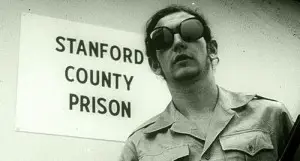
One of the most famous examples, this set a group of students (none of whom had criminal records and were psychologically sound) into a mock prison situation in the psychology department of Stanford University. The experiment was supposed to last for two weeks but cut short after six days following reports of torture by the ‘guards’. Observers reported that the ‘prisoners’ were suffering severe psychological trauma in some cases. Widespread reports of sensory deprivation, torture and some were even forced to commit humiliating sexual acts.
2. Milgram Obedience Test
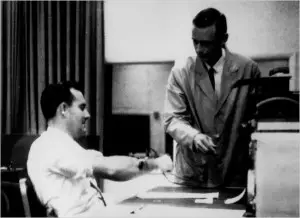
This is the most famous test ever devised. Two people, one a teacher and the other a learner, were put in different rooms and connected to a machine. The teacher was instructed to ask a number of questions. If the learner got an answer wrong, the teacher had to administer an electric shock ‘ each one with a higher voltage than the last. The learner never actually received a shock; instead an audio recording made it sound as though they were suffering physical pain (higher settings were lethal). When questioned later, the ‘teacher’ responded ‘I did it because I was told to’. It is a lesson in obedience and recently has been revisited for what it tells us about moral conflict.
3. Cognitive Dissonance Experiment

In a 1959 experiment, Leon Festinger asked a number of participants to perform a task ‘ something quite mundane such as turning a cog for an hour ‘ and then at the end paid them for their time. Half received just $1 and the other half were paid $20. All participants were asked to tell the next group coming in that it was an enjoyable job (which it wasn’t). What they found was that those who received $1 were more enthusiastic about the job than those that received $20. Cognitive dissonance is the effect of holding two conflicting viewpoints and then attempting to reduce the dissonance through justifying the outcome of the act.
4. ‘Little Albert’ Conditioning Test
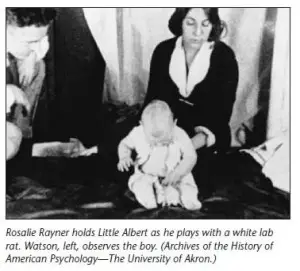
In this test, a baby boy was presented with a number of objects: a rat, a rabbit, a monkey, a mask and a burning newspaper. The child was indifferent to all of these things at first. Only when a facilitator played a loud and unpleasant noise when showing the child the rat did the baby react negatively. Eventually, they stopped playing the noise and the child continued to react negatively to the appearance of the rat. This conditioning test had been performed on animals many times but this was the first time it was used on a human.
5. Asch Conformity Test
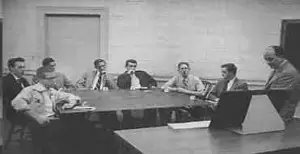
This is a very powerful test for understanding group behaviour. In this test, a number of people were put in a room and shown a series of cards and asked to answer a question based on each ‘which is the longest line’ etc. Most of the rest of the group were facilitators of the test and occasionally and deliberately gave the wrong answer. When confronted with this revelation, most people then conformed and gave what they knew to be the wrong answer to avoid being seen as outside of the group.
6. Marshmallow Test
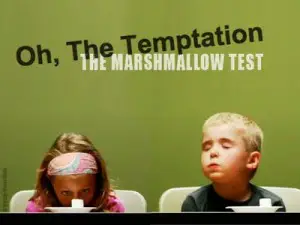
Another Stanford test, this one involved a group of children aged 4-6 in a room (one at a time); the room contained a table upon which was a single marshmallow. The child was told to wait 15 minutes and if the marshmallow were still on the table after this time, the child would receive two marshmallows as a reward. Just 1/3 of the children lasted the whole 15 minutes with most breaking at some point during the test. A small minority ate it the moment the test examiner left the room. Intriguingly, it seemed that those who had the willpower in later years did better on their SAT tests.
7. ‘Bystander Response to Arterial Bleeding’ Test

This intriguing test counteracts the belief of safety in numbers. In a recent experiment, facilitators set up a scene to show somebody suffering arterial bleeding in public. Instead of helping that person, most people just walked by. In similar tests, people are far more likely to help where there are fewer bystanders. The explanation for this is that in a crowd, most people are likely to leave the heroics to somebody else. A famous academic paper was written and published on the subject.
8. Missing Child Experiment

This is a test that has been performed several times and always with the same result. A mock ‘Missing Child’ poster is plastered on a shop front, or somebody claiming to be a family member is handing out leaflets. In many of these test cases, the child is nearby or sometimes actually in the group holding out leaflets. Few people notice though when questioned later, participants have commented on the similarity of the child but admitted to dismissing it.
9. Jane Elliot

In a test still used in classes around the world today, in the wake of the assassination of Martin Luther King Jr, Jane Elliot ‘ a teacher – divided her classroom into two groups ‘ those with brown eyes and those with blue eyes. She gave the blue-eyed children privileges and severely punished the actions of the brown-eyed children for even minor infractions while letting the same transgressions pass in the other group. Intriguingly, the brown-eyed children did worse on a mock exam she gave later that day. The following day she reversed the experiment and got the same results. Though it was a lesson in racism, it helped researchers learn a lot about the effects of prejudice.
10. Derren Brown’s ‘Messiah’

Though largely a showman, some of Brown’s TV series and on-off specials are clever cognitive experiments in confirmation bias. There is no test more demonstrative of that than his show: Messiah. Brown travels the USA meeting ‘true believers’ and convincing a Christian evangelist, an alien abductee, somebody with apparent psychic powers, a New Age guru and somebody who claims to contact the dead that he had each of their powers or knowledge. He admits that if they had accused him of being a charlatan, he would have admitted it. Yet in each case, they listened only to that which they wanted to hear and dismissed the red flags.
Conclusion
Human psychology is one of those subjects that fascinates everyone; experts and showmen like Derren Brown will never run out of ways to explore the human condition, nor to demonstrate it. Some of the tests above show the human capacity to commit heinous acts ‘because I was told to’ or to ignore those in plight.










Leave a Reply